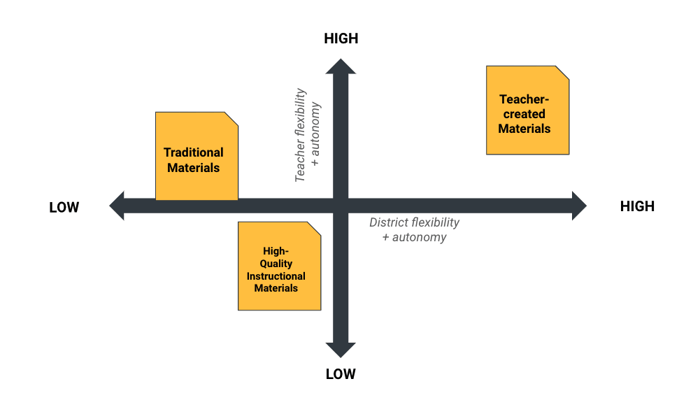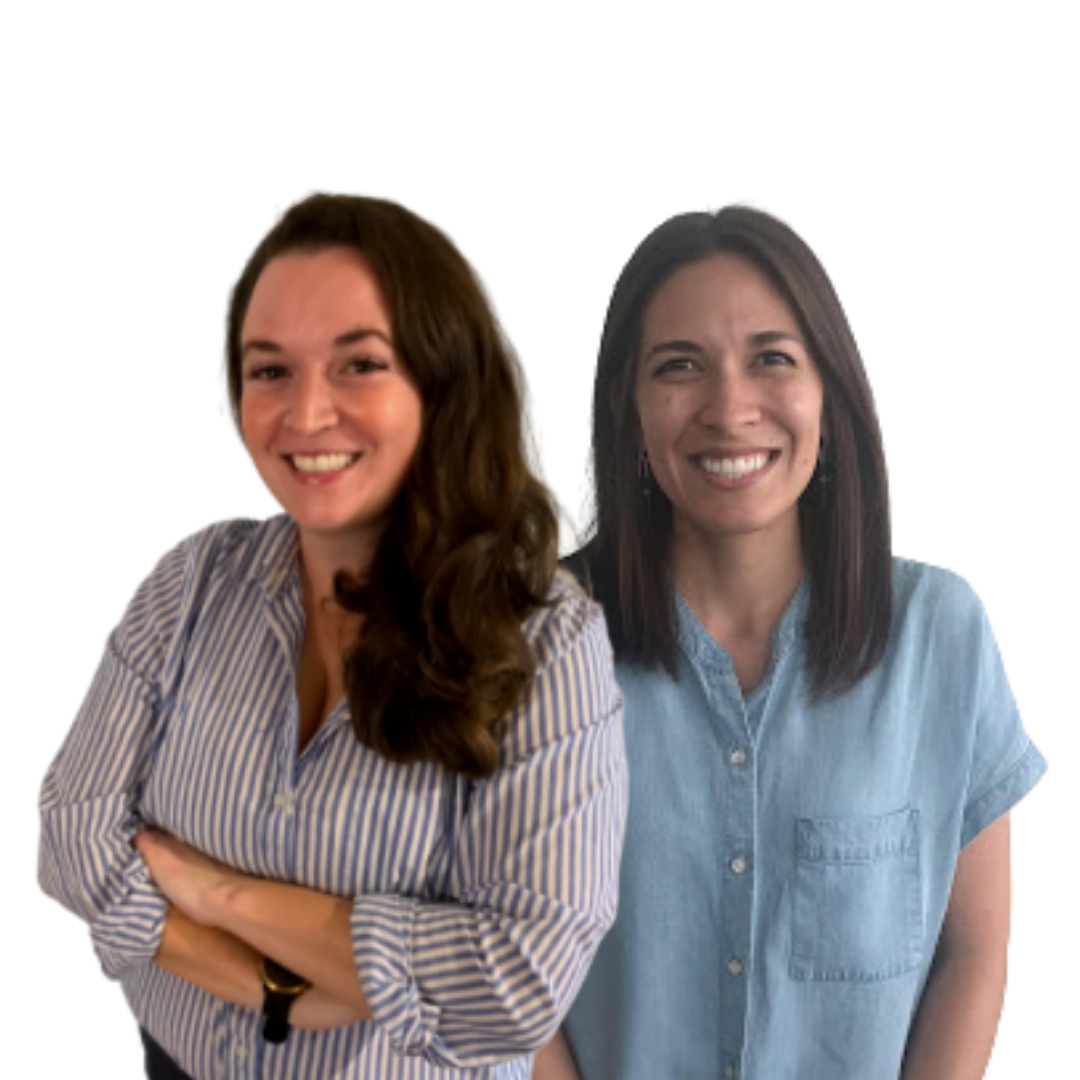Over the last 10 years, we have seen a significant shift in how educators access and leverage instructional materials to guide instruction. As many states adopted new, more rigorous standards, curriculum providers rushed to create materials that would prepare students for college and career and state assessments.
Though it took time, the current market for high-quality instructional materials (HQIM) is strong and presents states, districts, and educators with a different set of challenges. With so many options, how do you select the best materials to meet your needs and context, and how do you leverage these materials to foster student-centered learning? Join us as we explore key issues and potential solutions through a series of blogs, webinars, and videos.
In our experience, most schools and districts experience one of three realities based on the materials they have access to:
- Teachers leverage traditional curricular materials (textbooks with some supporting texts and resources)
- Teachers have the autonomy (and responsibility) to create their own instructional materials at the school and classroom level
- Teachers leverage robust, highly-aligned curricular materials (including student and teacher materials with very detailed lesson plans)

Each reality is influenced by the level of flexibility and autonomy at the classroom and district-level. While one context might offer more opportunities for agency – that increased flexibility creates increased demands for alignment, collaboration, and clarifying instructional vision. Below are a few key challenges and specific questions for three contexts to ensure a high quality experience for students and teachers.
Traditional Materials
Traditional materials can provide a strong foundation for standards-based instruction, but when thinking about the shift towards student-centered learning there are a few things to consider:
-
Where are there opportunities to provide additional scaffolds and enrichment opportunities that will allow all students to productively struggle, yet directly experience the complexity of the task?
Based on individual student needs, consider quick, high-leverage strategies like providing specific students sentence starters, chunked texts, and asking targeted questions to guide their thinking.
-
Where are there opportunities to increase student collaboration and allow student choice and voice?
By focusing on the purpose for collaboration, rather than the protocol itself, educators can ensure students have a variety of opportunities to collaborate. Whether you want to check for understanding, build academic vocabulary, or provide a space for diverse perspectives to be shared and internalized, there are protocols that can be built into existing lesson structures.
Teacher-Created Materials
In many contexts, teachers use content knowledge and a variety of sources to create their own instructional materials instead of relying on a core curricular program. Prioritizing flexibility and autonomy can lead to creativity and room for personalization, while also requiring a significant amount of time and energy to find, evaluate, select, and internalize resources. Within teacher-driven contexts, consider the following:
-
How will teachers ensure their lessons include key components such as: appropriate level of rigor, standards-alignment, relevance, and personalization?
Creating clear guidelines for lesson plans and supporting through ongoing use of lesson analysis protocols can help honor teacher agency while promoting your community’s vision of high quality instruction.
-
-
What opportunities exist to ensure alignment in student experience across classrooms within the same content and grade?
Leveraging structures like classroom walkthroughs, student work analysis protocols, and collaborative time like PLCs can create space for conversation and reflection.
Robust High-Quality Instructional Materials
Whether your materials have all green ratings from EdReports or a Tier 1 distinction from the Louisiana Department of Education, the materials you have access to can support keeping all students engaged in collaborative and complex learning grounded in the full expectations of the standards, however, there are a couple of important considerations to support student-centered learning:
-
How might you provide educators opportunities to internalize materials and prepare lessons?
While you won’t need to plan a lesson from scratch, you will need to prepare before each lesson, with your specific students in mind, to make it your own and to meet the unique needs of your students. It is also important to know where you are headed over the long term to make more informed decisions in the short term. Consider the purpose of each part of the lesson and protocol and where potential misconceptions and misunderstandings might occur.
-
Similar to traditional materials, where are there opportunities to provide additional scaffolds and enrichment opportunities that will allow all students to productively struggle, yet directly experience the complexity of the task?
Providing all students with access to complex texts and tasks requires intentionally scaffolding instruction based on your students and context. How much learning loss have your students experienced? Where might there be gaps in skills and knowledge and how can you provide ‘just in time’ scaffolds and supports?
Whether your district is using traditional materials, teacher-created materials, or robust curricular programs, the considerations above are just a few to begin unpacking ways to support the teacher and student experience. While these realities are experienced by teachers and students in unique ways, one thing they all have in common is the possibility to shift towards student-centered learning by personalizing instruction. Personalized learning moves away from a teacher-directed model towards one that is centered around the individual needs and strengths of every student. A student-centered approach allows the teacher to design and facilitate learning experiences – including how the curriculum is used – that empower every student.
More Curriculum Adoption and Personalized Learning reading
Blog: What Exactly Is Curriculum?
Blog: The Core 4 Elements of Personalized Learning
Blog: Six Examples of What Personalized Learning Looks Like
Blog: Personalizing Learning: Getting it Right
Blog: Personalizing Learning: Reflection and Goal-Setting
Blog: Choice Boards, Playlists, Pathways...Oh My!
Blog: How to Pick the Right Instructional Model for Your Classroom




